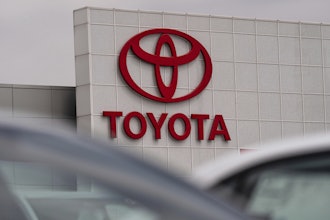DETROIT (AP) — Toyota Motor Corp. will continue to run a normal production schedule at its North American factories for at least the next two weeks, including overtime, the automaker said Wednesday.
Toyota said it will make decisions on future production based on parts supplies.
Toyota had begun cutting overtime in North American plants in October due to parts shortages from catastrophic flooding in Thailand, but the company's factories continued to run Monday through Friday on two shifts. Computer chips for engine controls and other functions are made in Thailand, and Toyota had run short of the parts. Normal production for Toyota's North American factories, including overtime, resumed the week of Nov. 14.
Toyota had earlier in the fall scheduled the overtime and Saturday work to make up for inventory shortages caused by the March earthquake and tsunami in Japan.
The company said Friday that it had restored operations at Japanese plants to near normal levels, including overtime, on Monday, and would extend that schedule through Dec. 2. It also restarted production at its Thai plants on Monday.
Honda Motor Co. and other automakers also had to reduce production because of the Thailand floods.
Toyota said Wednesday that the company has healthy inventory levels at dealerships, and it should meet fourth-quarter sales targets.
The company has seven vehicle plants making 12 models in the U.S., Canada and Mexico. The plants have 30,000 employees.
Model shortages, safety recalls and an aging product lineup have hurt Toyota's sales so far this year. In the U.S., the company's sales are down 8.8 percent, even though the overall market is up 10 percent through the end of October. Toyota's market share has fallen to 12.6 percent in October from 15.2 percent a year earlier, according to Autodata Corp.
The company sells Toyota, Scion and Lexus brands in the U.S.
Earlier this month Toyota reported Toyota said its quarterly profit slid 18.5 percent to 80.4 billion yen ($1 billion) on plunging sales caused by parts shortages from the tsunami disaster. Revenue fell nearly 5 percent from a year earlier to 4.57 trillion yen ($58.7 billion).


















